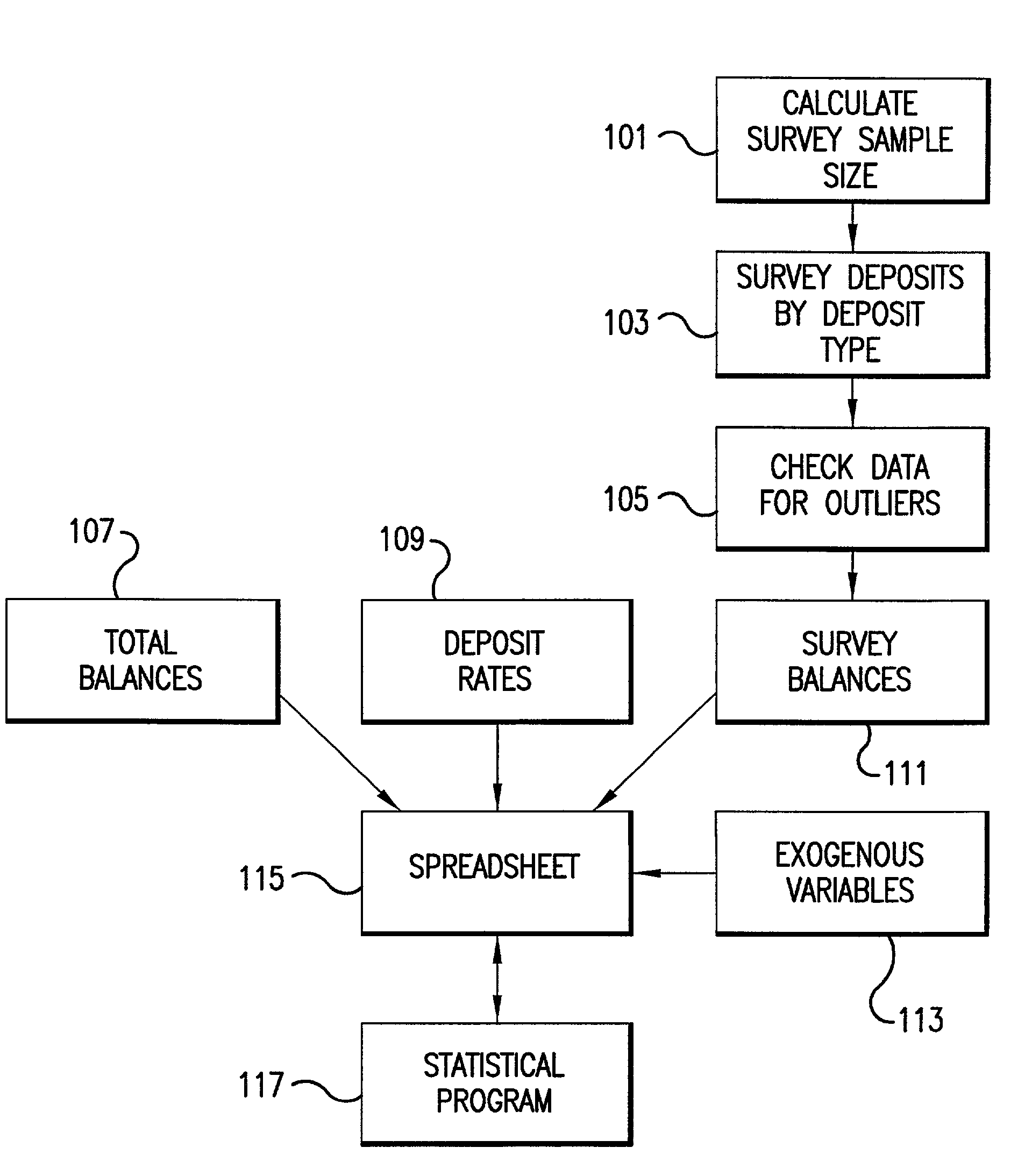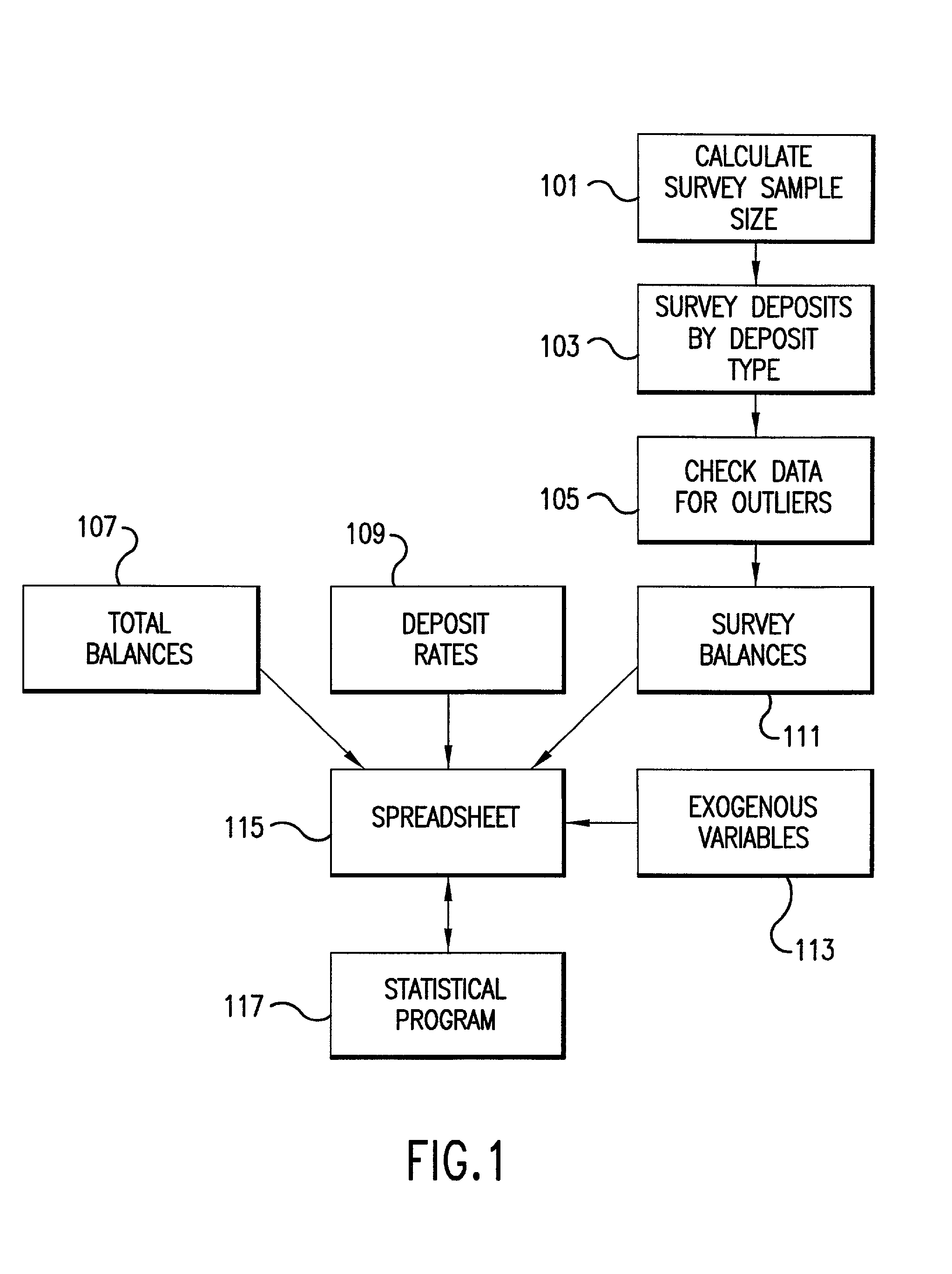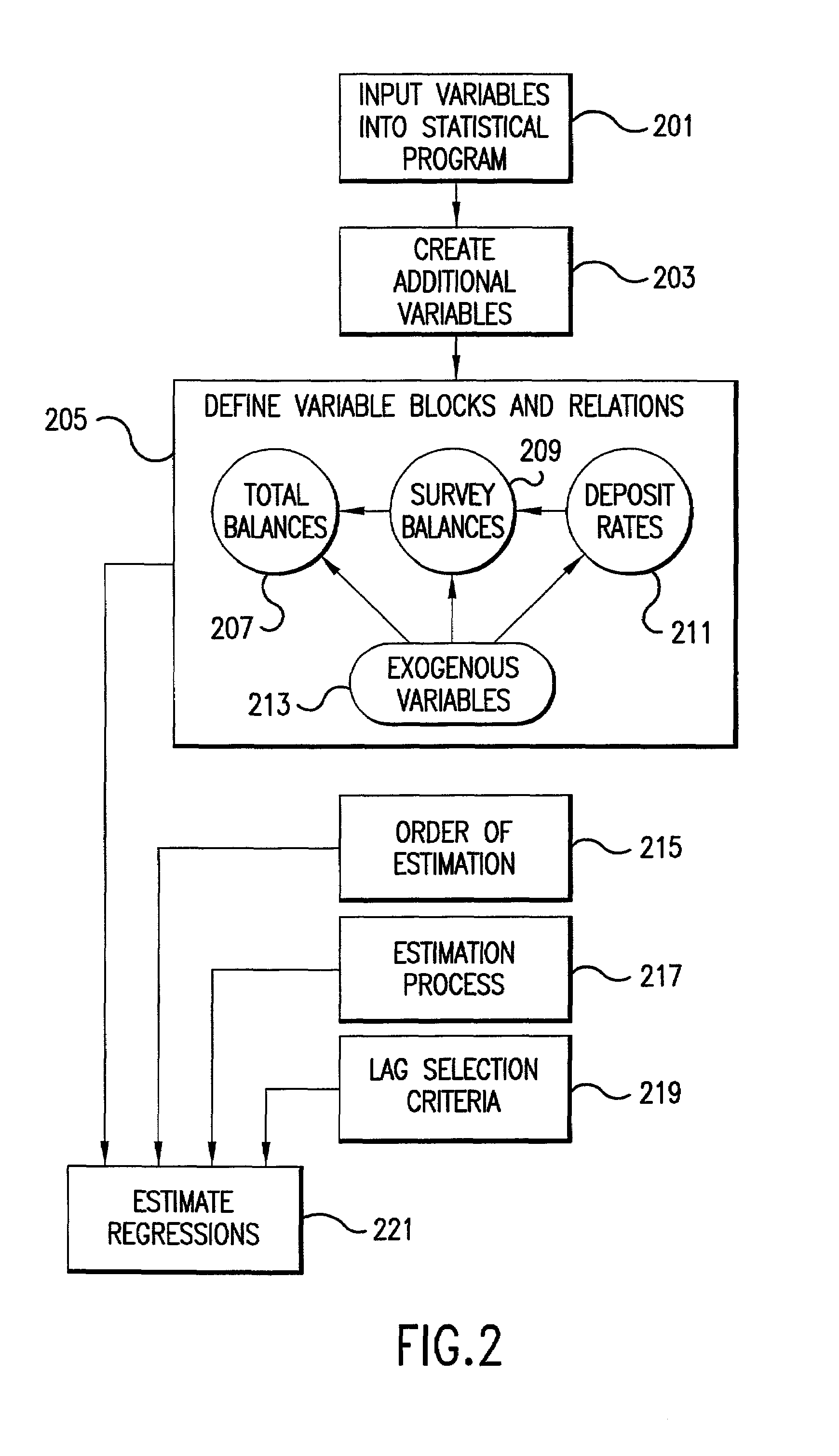System for determining a useful life of core deposits and interest rate sensitivity thereof
a core deposit and interest rate technology, applied in the field of financial forecasting and planning, can solve problems such as affecting the expected life of core deposits, affecting the purchase price of assets, and causing significant uncertainty in purchases, so as to accurately determine the expected life and the expected value of core deposits of financial institutions. the effect of a greater flexibility in the purchase of assets
- Summary
- Abstract
- Description
- Claims
- Application Information
AI Technical Summary
Benefits of technology
Problems solved by technology
Method used
Image
Examples
Embodiment Construction
[0035]The invention will be described herein in five parts for ease of understanding, without limitation. The first consists of a process for capturing or receiving initial data from a financial institution and putting the initial data in a predetermined format for use in subsequent processes. The second involves a process for selection of variables that influence retention rates in particular as well as total deposit balances and the institution's interest rates. The third involves alternatives allowed to the basic process described in the second part. That is, there is a basic approach to the estimation process but there are a number of alternatives that a financial institution can choose depending on the use of the forecasts. The fourth part is the actual forecasting process itself which is based on the estimation described in steps two and three. The forecasting process also allows an institution a number of alternatives depending on the use of the forecasts. Finally, the fifth ...
PUM
 Login to View More
Login to View More Abstract
Description
Claims
Application Information
 Login to View More
Login to View More - R&D
- Intellectual Property
- Life Sciences
- Materials
- Tech Scout
- Unparalleled Data Quality
- Higher Quality Content
- 60% Fewer Hallucinations
Browse by: Latest US Patents, China's latest patents, Technical Efficacy Thesaurus, Application Domain, Technology Topic, Popular Technical Reports.
© 2025 PatSnap. All rights reserved.Legal|Privacy policy|Modern Slavery Act Transparency Statement|Sitemap|About US| Contact US: help@patsnap.com



